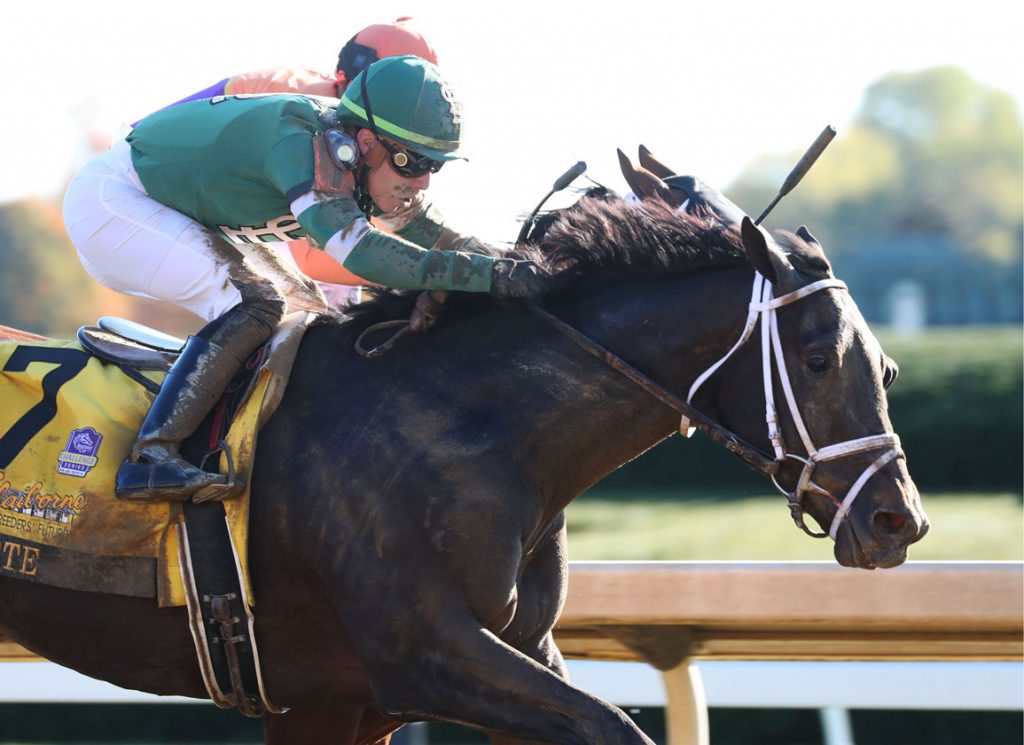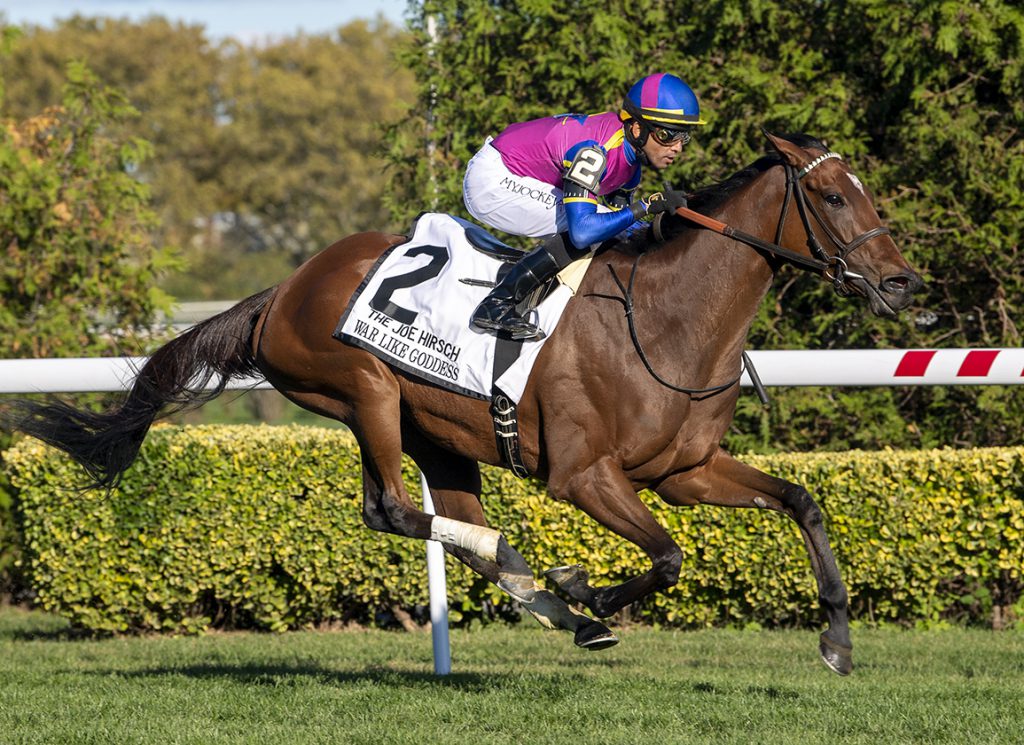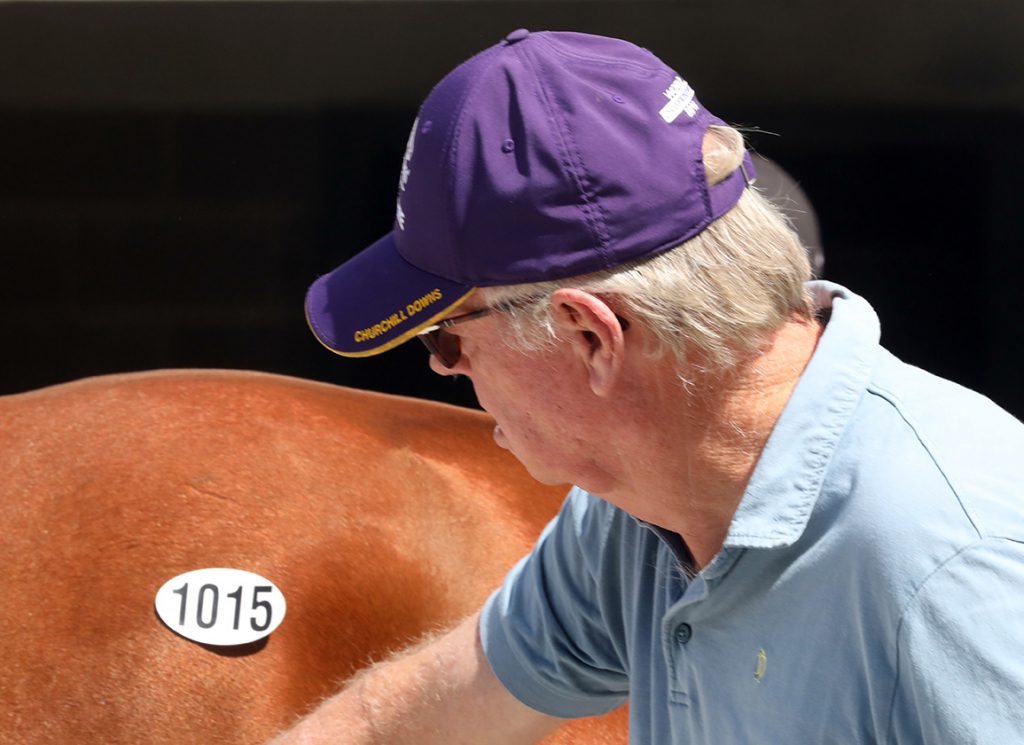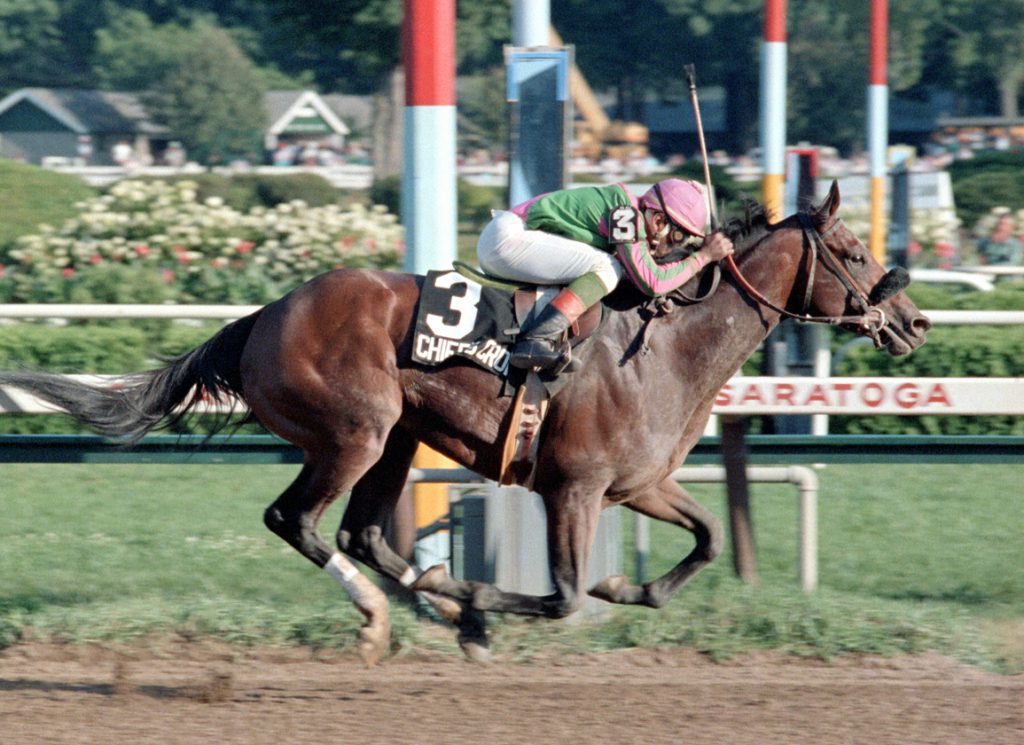What do these stallions have in common: Competitive Edge, First Samurai, Include, First Dude, Majesticperfection, Midnight Lute and Noble Mission (GB)? Okay, so you could also add A.P. Indy, Into Mischief, Lope de Vega (Ire), Medaglia d'Oro and Quality Road to the mix. But you would hope so, too, if you happen to be one of those highly paid advisors who tell their patrons that the only way to start a breeding program is with most expensive covers around.
Because these are the dozen sires responsible for mares that made seven figures at the Keeneland November Sale. And their overall complexion suggests a curious disconnect between this auction, and the one staged in the same ring back in September.
You can judge as much from a couple who have been through both sales. Proud Emma (Include) made $9,000 as a yearling, while sale-topper Midnight Bisou (Midnight Lute) notoriously failed to reach her reserve at $19,000. That's hardly typical, obviously, in that most of the yearlings trading for that kind of money struggle to pay their way; but we all know how few of the most expensive ones fare any better.
Admittedly we have just seen Flightline (Tapit) and Malathaat (Curlin) standing up for the seven-figure yearling. And the whole viability of our business hinges on enough of those investments working out, to keep the rich guy in the game, in equilibrium with enough stories like Rich Strike (Keen Ice) to give everyone else a chance.
(To hear this column as a podcast, click here.)
In the case of these valuable broodmare prospects, they have generally disclosed something–not blatant in their pedigree and conformation as adolescents–to secure elite caliber as runners. But while performance is demonstrably a critical indicator for their recruitment, their purchasers will often have contrived some retrospective discovery of genetic depth.
To be fair, we're all guilty of that. Once a horse demands attention on the racetrack, we will generally turn up some satisfactory, latent distinction in its family tree, especially one that flatters our prejudices. Rich Strike is a good example. His dam had been discarded for $1,700, and his half-sister was claimed for $5,000 the month before he won the Derby. Yet he turned out to have such an interesting background–by a grandson of Smart Strike out of a Smart Strike mare, for instance, and a third dam by a forgotten full-brother to Smart Strike's sire–that people like me could rationalize his emergence as a wholesome rebuke to the flimsiness of many commercial pedigrees.
We could hail his sire, similarly, as just the type that “should” be siring Derby winners–even if his only other stakes winner, at that stage, had come in Puerto Rico. Keen Ice's pedigree is saturated by old-fashioned influences, which sustained him to be better than ever in his fourth campaign. He soaked up nine races as a sophomore, rounding off with a strong-finishing fourth in the GI Clark H., and I'm duly delighted to see that Rich Strike is himself likely to make his own ninth appearance of the year in the same race. And don't forget that his campaign really began in the Gun Runner S., in the last week of 2021.
That race was won by Epicenter (Not This Time), who remained at Fair Grounds for all three of the local Derby rehearsals. In the process he emulated Mandaloun (Into Mischief) the previous year, when other local protagonists included Hot Rod Charlie (Oxbow) and the lamented Midnight Bourbon (Tiznow).
New Orleans appears to be an increasingly important staging post on the Triple Crown trail since its trials were extended. I suspect that's because the extra distance redresses a loss of conditioning opportunity in the lighter schedule nowadays favored by so many trainers. As a result, the opening of the meet this weekend feels very much like the start of the next cycle in our community narrative. It will be interesting to see whether the traditional winter haven of Florida can respond to this squeeze.
Be all that as it may, producing a Kentucky Derby winner at the first attempt did not rescue Keen Ice's latest yearlings from neglect at the sales. But while he plainly owes fourth position in the second-crop table to a single earner, the fact remains that his maturing stock has included 70 other winners, equating to 58% of starters. That handsomely outranks all relevant competition, including the three feted names above him: Gun Runner (40%), Arrogate (46%) and Practical Joke (50%).
So while some of his farm's strategies are hardly aligned with commercial convention, I certainly wouldn't mind a daughter of a stallion who carries Deputy Minister 3×3 and Chic Shirine (Mr. Prospector) as fourth dam. That's because I believe that all matings should aim at a saturation of genetic quality, three or four generations back, as the best insurance against the unpredictability of inheritance. If you can't even be certain what color your foal's coat will be, then you must surely strive to make it a matter of indifference which strand comes through, in terms of ability, simply because it's all good stuff.
Yet the yearling market seems to be massively predicated on sire power. This, to a degree, is self-fulfilling: in order to warrant an expensive cover, a mare needs to bring commensurate performance or pedigree into the equation. Naturally there are stallions that have had to earn their stripes, and come up the hard way. Yet even Into Mischief reiterates the folly of disregarding 50% of a horse's genetic contribution, his dam Leslie's Lady famously having then come up with Beholder (Henny Hughes) and Mendelssohn (Scat Daddy).
Leslie's Lady had been an $8,000 short yearling by Tricky Creek out of a Stop the Music mare. Interestingly, though he ended up standing in New Mexico for $2,500, Tricky Creek was a source of exactly the kind of soundness breeders can expect from Keen Ice (and Rich Strike, when his time comes). Late in his stud career, a survey ranked Tricky Creek fifth among active sires by percentage of starters-to-foals; and seventh, by starts-per-starter. (You really shouldn't overlook this, when reflecting on the way his daughter produced Beholder to win Grade I races every year from two through six.)
Moreover Tricky Creek's dam was a half-sister to the dam of Soaring Softly (Kris S.) and in all produced 15 winners, six at stakes level. At one stage, Sheikh Mohammed gave $5.3 million for a Kingmambo half-brother to Tricky Creek at the yearling sales. So while Tricky Creek himself couldn't even muster 20 stakes winners, there was ample quality percolating that might be stoked back to life by the right alchemy.
Without getting too bogged down, the mother of Leslie's Lady was out of a half-sister to a Grade I winner, and the next dam won races like the Alcibiades S. and Schuylerville S. The point is that Leslie's Lady had nearly seamless quality from top to bottom in her fourth generation. Yet that stuff, for your average yearling speculator, is quite literally off the page.
The best breeders, however, know that it's a long and winding road to the summit. That's why the market for broodmares is far less beholden to nervous fads than the one for their offspring.
So I want to finish off with a tribute to two horses who attest to the merit of the long game. One is Tempesti (Ity) (Albert Dock {Jpn}), co-owned by the Razza Dormello Olgiata synonymous with the breed-transforming partnership of Federico Tesio and Mario Incisa della Rocchetta. In Milan last Sunday he became the first horse carrying the iconic red crossbelts to win the Group 2 prize that honors Tesio's memory.
As a coincidental snapshot of an immeasurable legacy, Tricky Creek represented just one of countless sire lines tracing to Nearco (Ity); while his damsire His Majesty, whose legacy as a broodmare sire also includes Danehill, was by another Dormello graduate in Ribot (GB). But you can equally find those names on either side of the pedigrees of, say, Frankel (GB) or Flightline.
Less cheerfully, this week marked the end of the road for Cambiocorsa (Avenue of Flags), once feted as “queen of the hill” at Santa Anita; and subsequently dam of five stakes winners, and second dam of European champion Roaring Lion (Kitten's Joy). Tragically, she had outlived both her celebrated grandson, when barely embarked on a stud career, and his dam Vionnet (Street Sense), who was also prematurely cut down.
Nobody cares for her horses more lavishly than Jan Vandebos, and this loss will doubtless poignantly renew the memory of others. But she should be proud of Cambiocorsa's contribution to the remarkable legacy of her dam Ultrafleet (Alfeet)–who also produced millionaire sprinter California Flag (Avenue of Flags) and the dam of GI Preakness winner Rombauer (Twirling Candy).
Ultrafleet was a $10,500 yearling at the September Sale, and made that look expensive on the racetrack. But she then founded a dynasty so regal that even her unraced daughter by Cowboy Cal could produce a Classic winner.
That won't surprise those who have been scouting the breeding stock sales not just for the past couple of weeks, but for many decades. It had been a similar story to Keeneland at Fasig-Tipton, after all: sires with seven-figure mares there included Awesome Patriot, Brody's Cause, Daredevil, Flower Alley, Karakontie (Jpn), Mucho Macho Man, Street Boss, Tale of the Cat (twice) and Wilko.
In the end, I think the obsession with sire power is often little more than a gesture–whether a practical gesture, or a merely irritated one–against the overwhelming complexity of this game. With their huge modern books, sires invite the illusion that you can get all the answers by having a more sophisticated software program than the next guy. That's always going to appeal to investors who come into this business expecting it to behave as coherently as those in which they made their money. A mare, with one foal a year at most, is little or no help to that way of thinking. But good luck to you, if you only bother seriously with one face of the coin–and need it to land that side up, every single time.
The post This Side Up: Where the Ice of Fashion Melts appeared first on TDN | Thoroughbred Daily News | Horse Racing News, Results and Video | Thoroughbred Breeding and Auctions.











